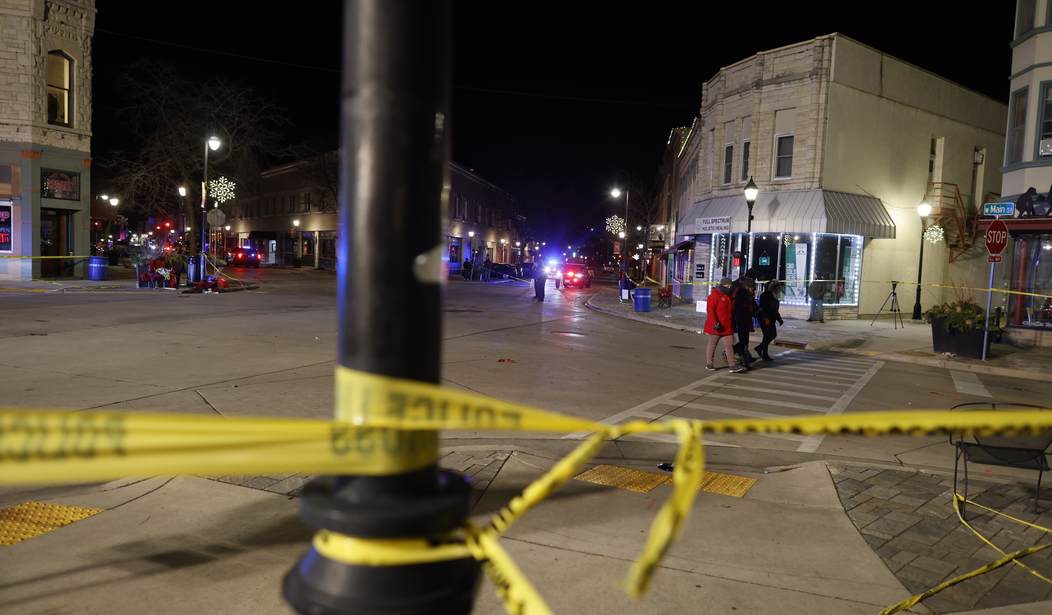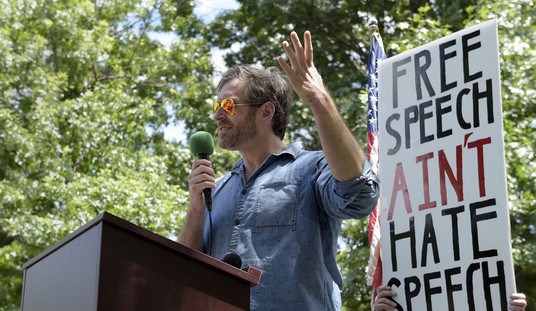No one can dispute that the outcome was horrific. Valentina Orellana-Peralta, an innocent 14-year-old girl, was struck by a police office’s bullet and died in her mother’s arms. It was the type of tragedy from which police reforms often arise.
“Body-cam video shows chaos in Burlington store,” reads the headline of the front-page, above-the-fold story in Tuesday’s Los Angeles Times. The headline over an accompanying “analysis” article reads, “‘Active shooter’ strategy under scrutiny.”
Yes, it was chaotic, and by all means we should scrutinize the incident to the last detail. But any contemplated changes to law or policy designed to avert tragedies like this one will only lead to others. There is no law, there is no policy that can foresee every tactical situation and guarantee that if followed to the letter no undesirable outcome would occur. Life is messy, and police work is especially so.
In reading the L.A. Times’s analysis of the police tactics, I at first found it surprisingly fair. Actual experts in police use-of-force issues were contacted and gave informed, reasonable opinions. But then the story reverted to true L.A. Times style, in which any genuinely expert opinion must be countered with uninformed hysteria. “Valentina’s killing,” says the Times, “sent shockwaves across not just Los Angeles but also Chile, where the girl was from. And in many corners there were angry questions about police tactics.”
Quoted first was Graciela Cornejo, 70, who lives near the store where the shooting occurred but had no first-hand knowledge of the circumstances (she had heard about it from her daughter). “How can they shoot crazy like that?” she asked. “They’re trained for all of this. I just can’t understand.”
Indeed, she cannot understand, and her insight only serves to stoke outrage while offering nothing to the Times’s purported analysis of the shooting. And of course no L.A. Times story on a police shooting would be complete without a contribution from some self-appointed community activist. For this occasion they turned to one Ron Gochez, whom they describe as a “a veteran community organizer and high school history teacher in South Los Angeles.” Gochez, says the Times, “believes the incident would have been handled differently in a more affluent, white neighborhood, with police less likely to quickly open fire in a store filled with holiday shoppers.”
Equally uninformed and echoing the racial resentment was Domingo Garcia, national president of the League of United Latin American Citizens. “Everything in their academy training,” said Garcia, “is supposed to teach them to consider the worst-case scenario before drawing their service revolvers. Equally troubling is that this incident is only the latest in a rash of recent LAPD shootings involving Latinos.”
Let’s put the racial grievance talk aside and examine what actually happened, which is presented in an LAPD video summary. On Dec. 23, at about 11:50 a.m., Daniel Elena-Lopez, 24, enters the Burlington store at Victory and Laurel Canyon Boulevards in North Hollywood, a section of L.A.’s San Fernando Valley. Despite the rain and cool temperature, he is dressed in shorts and a tank top as he wheels his bicycle inside the store and brings it up the escalator to the second floor.
He next appears near the top of the escalator dressed in a jacket and pants apparently selected from racks in the store. He lays the bike on its side, partially blocking access to the down escalator. As customers nonchalantly pass by, he picks up the bike and raises it over his head before putting it back down and walking it a short distance, at which point he strikes a woman with his hand before stumbling over the bike. He returns to the top of the escalator, leans the bike against a railing, then retrieves the heavy cable bicycle lock he had previously dropped.
He then swings the lock at his bicycle, knocking it down, then walks off to strike various other items, including a computer monitor. As he passes out of frame, customers can be seen hurrying to the escalator while looking back as if escaping some threat. Elena-Lopez comes back into frame and is seen using the lock to strike the glass railing at the top of the escalator.
As Elena-Lopez again walks out of frame, a woman can be seen talking on the phone, apparently reporting him to the police. (There were several such calls, including at least one that reported the incident as a shooting in progress.) Another woman runs into frame, apparently fleeing a threat, and as she hurries down the escalator, Elena-Lopez comes into frame swinging the lock.
Elena-Lopez heads down the escalator, soon followed by a woman who is apparently unaware she is approaching the man responsible for the commotion. As she attempts to pass him, he grabs her and tries to hold onto her. She breaks free, but he catches up to her at the bottom of the escalator. He knocks her to the floor but does not strike her with the lock.
As this assault is occurring, another woman is descending the escalator. Elena-Lopez grabs her, too, but she breaks free when his newly acquired pants begin falling around his ankles. He abandons the pants, puts his boots back on, and exits the store for about 90 seconds.
Related: L.A. Times and LAPD Ignore the Realities of Crime in the City
He re-enters the store and hurries up the escalator as the first four police officers arrive. Two of them are armed with shotguns, the third has his handgun drawn, and the fourth talks on his radio while his handgun remains holstered. As these officers ascend the escalator, a fifth officer arrives and draws his handgun before heading up the escalator.
Two more officers soon arrive, one of them armed with a rifle. They head up the escalator to join their colleagues. Three additional officers enter shortly thereafter.
A camera on the second floor captures Elena-Lopez as he approaches a woman from behind. She, too, is apparently unaware of what has transpired as she casually pushes a shopping cart between racks of clothing. Elena-Lopez strikes her repeatedly with the lock, then knocks her down and continues striking her with full force. He then drags the woman out of frame as the first officers are seen rounding the corner from the escalator.
The woman crawls back into frame, where Elena-Lopez can be seen striking her with the lock and kicking her in the face. She crawls to the end of the display aisle, where she is now visible to the approaching officers.
The body-camera footage released by the LAPD on Monday shows the officer with the rifle take a position near the bleeding woman and fire three rounds at Elena-Lopez. He died at the scene, as did, tragically, Orellana-Peralta, who was in a nearby changing room with her mother. One of the rifle rounds had apparently ricocheted off the floor and penetrated the wall of the changing room.
In their story describing the incident, the L.A. Times makes an issue of the fact that the officer who fired “had rushed past some of his colleagues who were urging him to slow down.” As the Times writers are apparently unaware (four of them share the byline), LAPD training dictates that an officer with a long gun, preferably a rifle, take the lead position in the diamond formation on the assumption that it is this officer who will see the suspect first and be best equipped to confront him. Recall that at least one caller to the police reported the incident as a shooting.
I can’t claim to know what this officer was thinking, but any officer-involved shooting must be judged based on facts reasonably known to the officer at the time. Section 835(a)(2) of the California Penal Code reads as follows:
A threat of death or serious bodily injury is “imminent” when, based on the totality of the circumstances, a reasonable officer in the same situation would believe that a person has the present ability, opportunity, and apparent intent to immediately cause death or serious bodily injury to the peace officer or another person. An imminent harm is not merely a fear of future harm, no matter how great the fear and no matter how great the likelihood of the harm, but is one that, from appearances, must be instantly confronted and addressed.
In this case, the officer responded to a reported shooting, armed himself appropriately, saw the victim being attacked, then shot the attacker a short distance away. There was no one visible behind the suspect that would have caused a concern for a safe background, and the number of rounds fired was not excessive. Under the circumstances, the officer acted reasonably and was well within the law, no matter how tragic the outcome.
I can envision no change to law or policy that would avert such a tragedy in the future unless such changes mandated a level of circumspection among the police that innocents would be killed or injured while officers dawdled and figured out how to react. Not every tragedy demands a change.










Join the conversation as a VIP Member